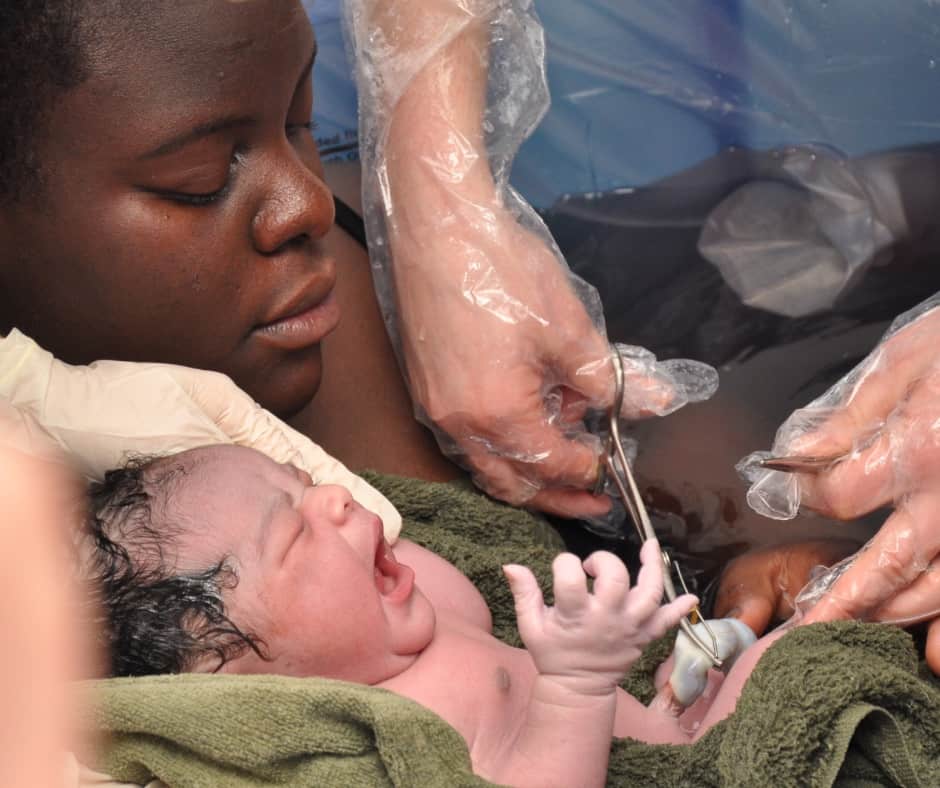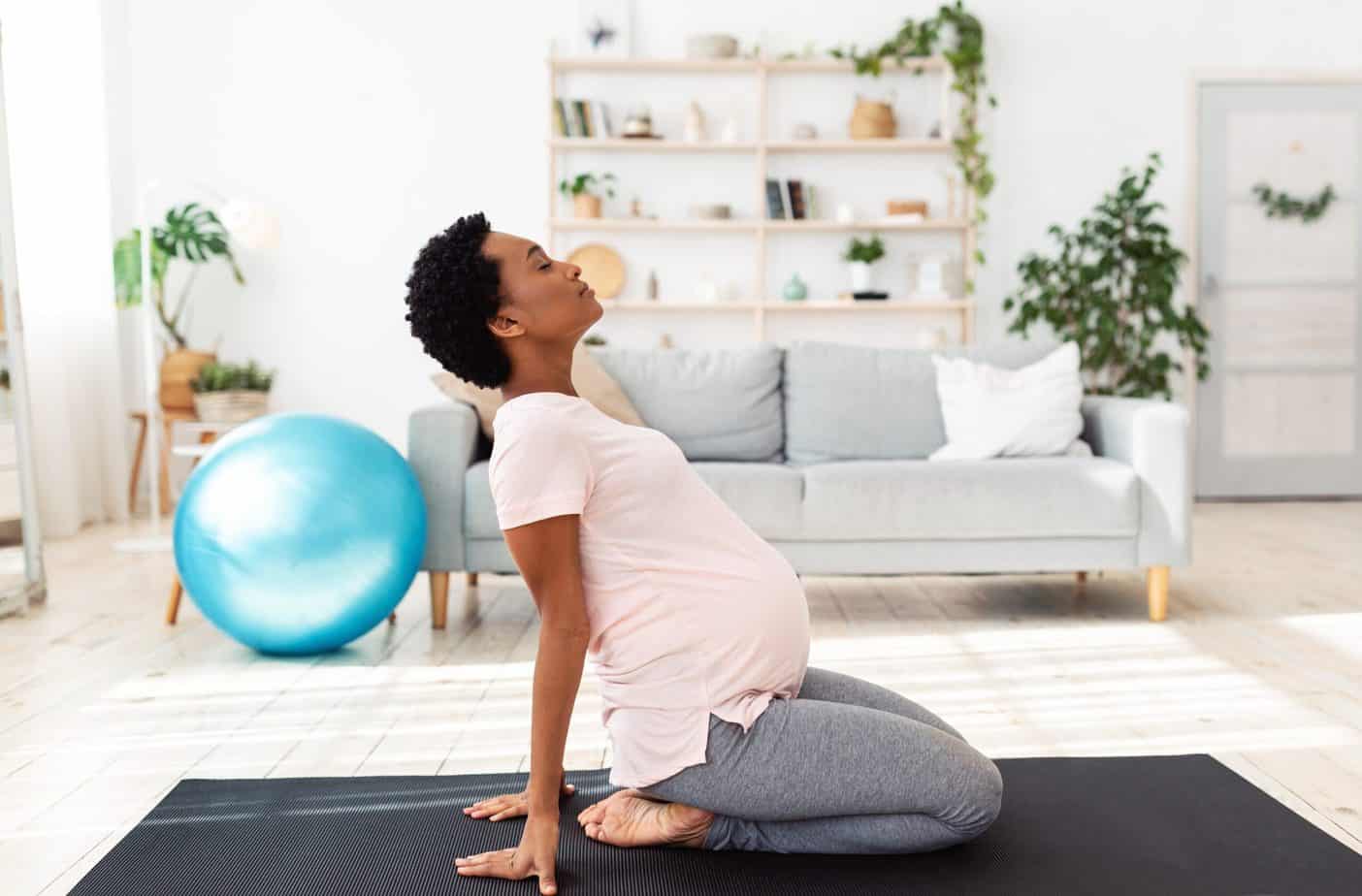Karen Ellis
Postnatal Rehabilitation Coach, Postnatal Exercise Instructor and former Midwife
Website – www.karenpostrehab.co.uk
@karenpostrehab
Summary
Pelvic floor education in your postnatal care package is generally lacking and often at best consists of the midwife saying ‘Remember to do your pelvic floor squeezes daily’ and handing you a leaflet. But what does that even mean? Has anyone ever actually spent the time talking you through how to do a pelvic floor squeeze effectively? If not – you are in the perfect place. Let’s get to work.
Breathe
When we connect with our pelvic floor we always want to do this on the out-breath. That is because we want your pelvic floor to work alongside your diaphragm (that is the muscle that sits just under your lungs). As you breathe in your diaphragm moves down and you want your pelvic floor to relax and move down with it. As you breathe out your diaphragm moves up, so you want your pelvic floor to connect and move up with it. The two muscles at the top and bottom of your core work together. So always connect with your pelvic floor on the out-breath.
Two Sections of Your Pelvic Floor
Your pelvic floor is made up of two sets of muscles. One set around your anus, at the back of your pelvic floor, and one set around your urethra (where you pee from) and your vaginal opening, towards the front of your pelvic floor. We need to ensure we get both sets of muscles in our pelvic floor squeeze. I am going to help you with that.
Muscles Around Your Anus
Right here we go… I want you to think about the muscles that are around your anus. To help you think exactly what these muscles are, think about the muscles you would use to hold in wind. BUT – I want you to make sure you are not switching on the muscles that are in your butt cheeks. So, pop your hands under your butt cheeks and I want you to think about making sure the muscles under your hands do not switch on.
Remember to connect on the out-breath. So as you breathe out you are going to concentrate on switching on the muscles around your anus without the muscles in your butt cheeks.
Ready?
Let’s go…… Breathe in……….Breathe out.
Let’s do that three more times…
Breathe in……….Breathe out.
Breathe in……….Breathe out.
Breathe in……….Breathe out.
Did you notice the muscles in your butt cheeks switch on? If you did, I want you to be conscious of this. Spend some time practising connecting with the muscles around your anus without your butt cheek muscles (AKA your Glutes) switching on.
Muscles around your Urethra and Vaginal Opening
Now you are connecting on an out-breath to the muscles around your anus we are going to add to that. We are going to add the muscles around your urethra (where you pee from) and around your vaginal opening. Have a little think about the muscles that you would hold if you needed a pee, but you needed to hold it in. Those are the muscles around your urethra. Also, think about the muscles around your vaginal opening. Imagine you had a tampon inserted and you were trying to pull tight around it. Think about those muscles too.
We are going to have a go at connecting with all of those muscles together. It might help to think of it as a wave of muscle connection. A wave from the back of your pelvic floor to the front of your pelvic floor right up to the bony bit at the front of your pelvis. We are going to do this on an out-breath.
Here we go…
Breathe in……. Breathe out.
Let’s do that together three more times…
Breathe in……. Breathe out.
Breathe in……. Breathe out.
Breathe in……. Breathe out.
A Lift and a Relax
When you make this connection, it is also great to think about a lift of the pelvic floor. Your pelvic floor has layers of muscles. Some muscles are outer muscles that sit not far under the skin, whereas other muscles are deep inside. To get those deeper muscles you want to be thinking about a lift when you connect. Imagine squeezing your vaginal muscles around a tampon and then trying to lift the tampon inside you.
I want you also to be thinking about the relax. As you breathe in, can you feel the muscles in your pelvic floor relax? Some mums can suffer from a tight pelvic floor and need to work on this relaxation. So pay attention to that. That may be a clue to something that you need to work on.
So now our connection looks something like…
A deep breath in feeling your pelvic floor relax, then as we breathe out to connect, think of a wave of muscles starting from around your anus to the front of your pelvic floor (anus, vaginal opening, urethra) and then lift.
Ready? Let’s give it a go.
Breathe in……. Breathe out
Let’s do that together three more times…
Breathe in……. Breathe out.
Breathe in……. Breathe out.
Breathe in……. Breathe out.
Wow! Well, blumming done you! Well, blumming done for getting here. For recognising that you want to work on your pelvic floor and for doing it. It can feel like a lot, to begin with, but you have made a start.
It doesn’t stop here though. This is just the start. To have a strong pelvic floor there are some other steps too. When you have spent some time practising this connection you feel ready to learn more about what you need to do to have a strong pelvic floor on my other post linked below in ‘related articles’.
If you learn better by being taught and visuals sign up for Karen’s Bi-monthly free Pelvic Floor Workshop. https://www.karenpostrehab.co.uk/free-strong-pelvic-floor-workshop
Or if you want to jump right into being hand-held through your postnatal recovery, have access to an expert to ask questions along the way, postnatal exercise classes and everything you need to have dry knickers, a strong core and a body you have confidence in so you can enjoy active adventures with your littles join Karen’s Postnatal Exercise membership. https://www.karenpostrehab.co.uk/full-online-membership












